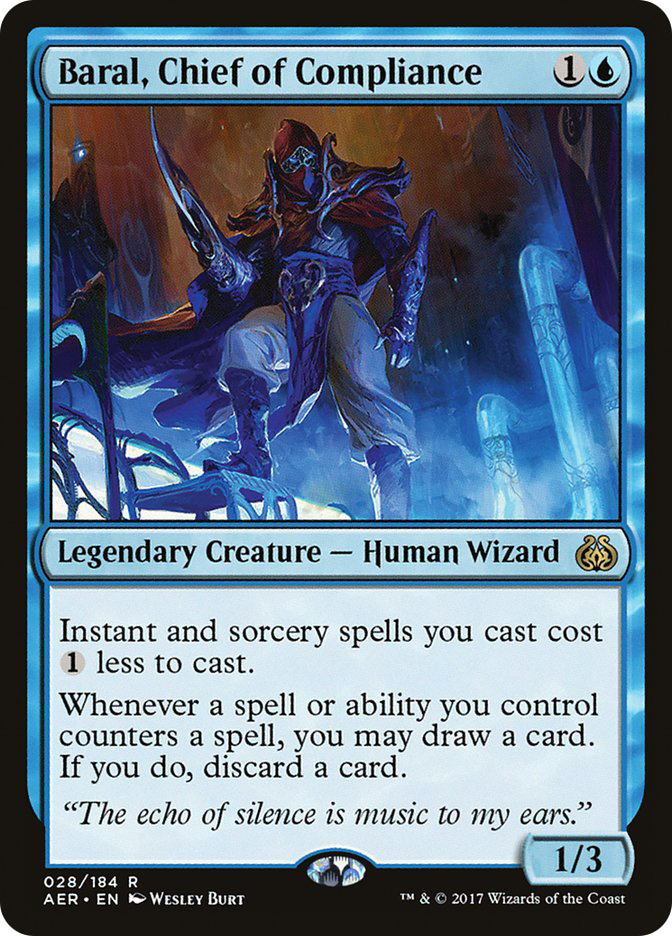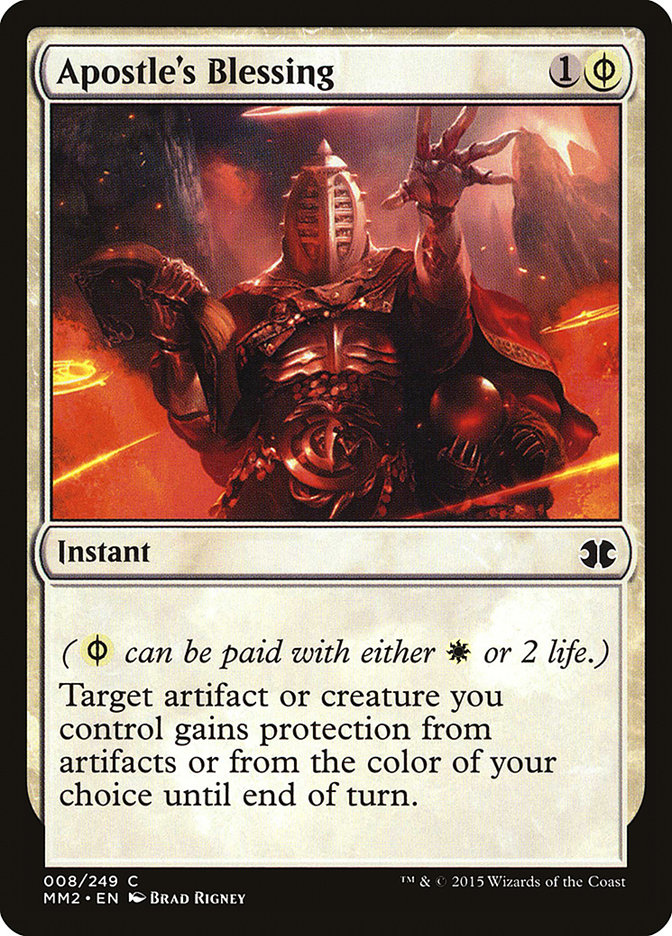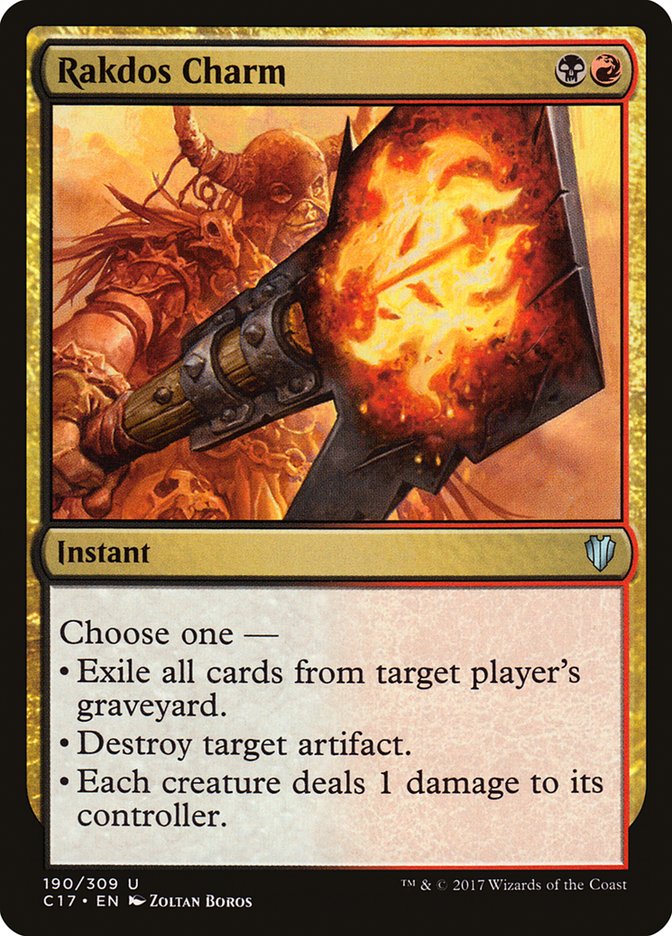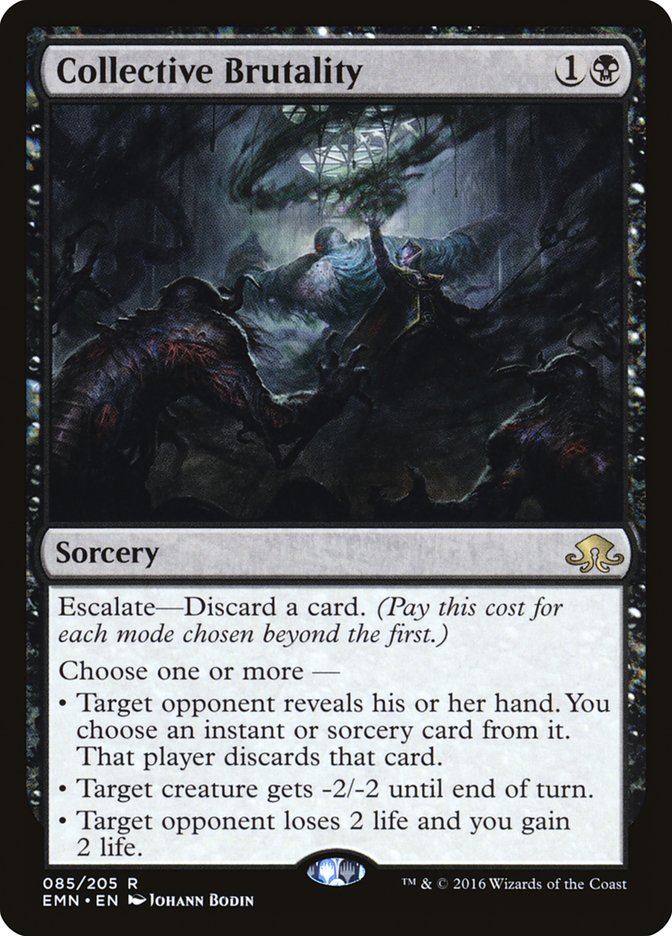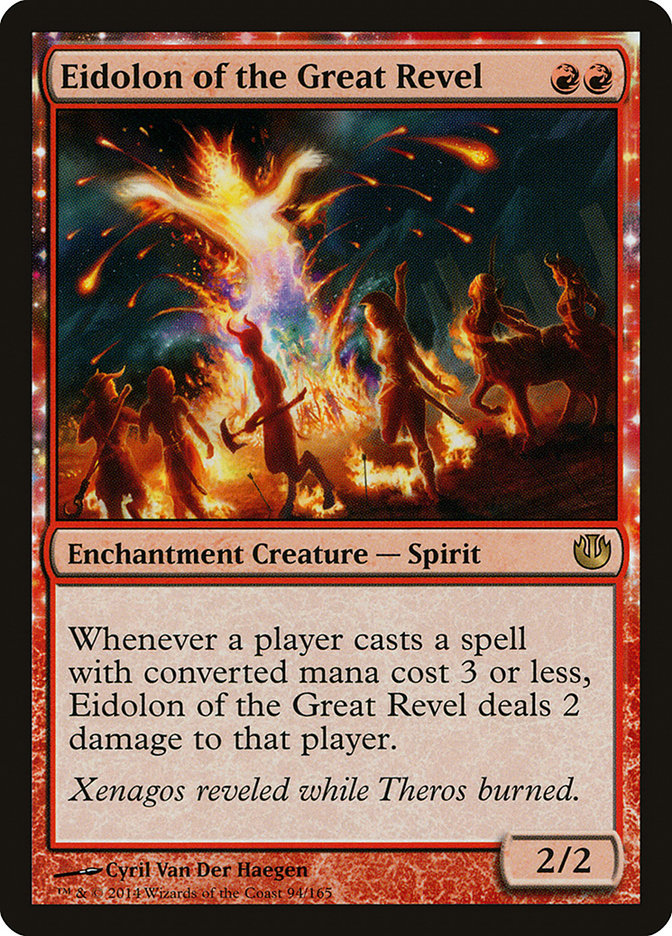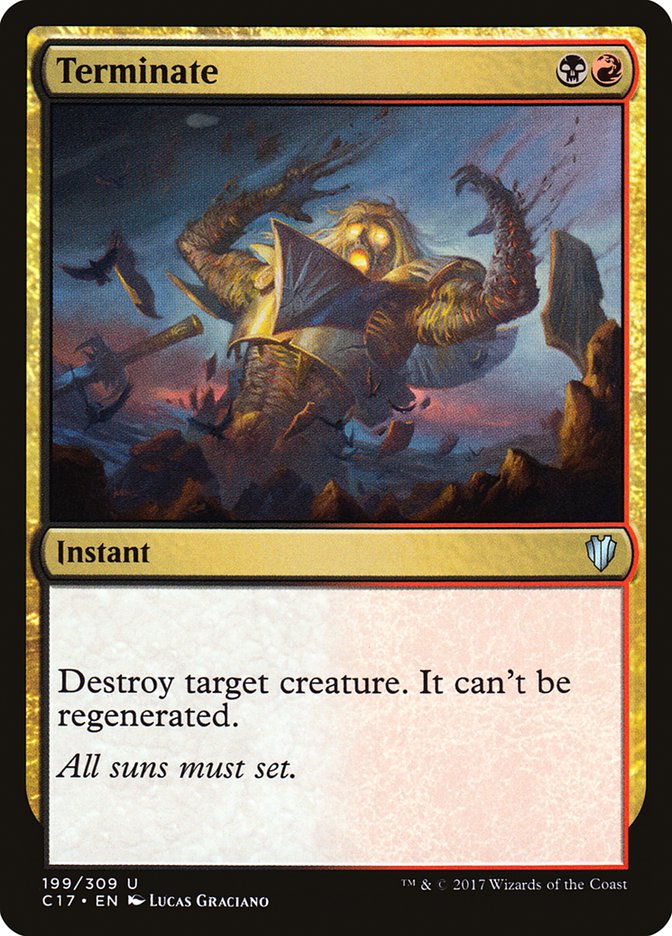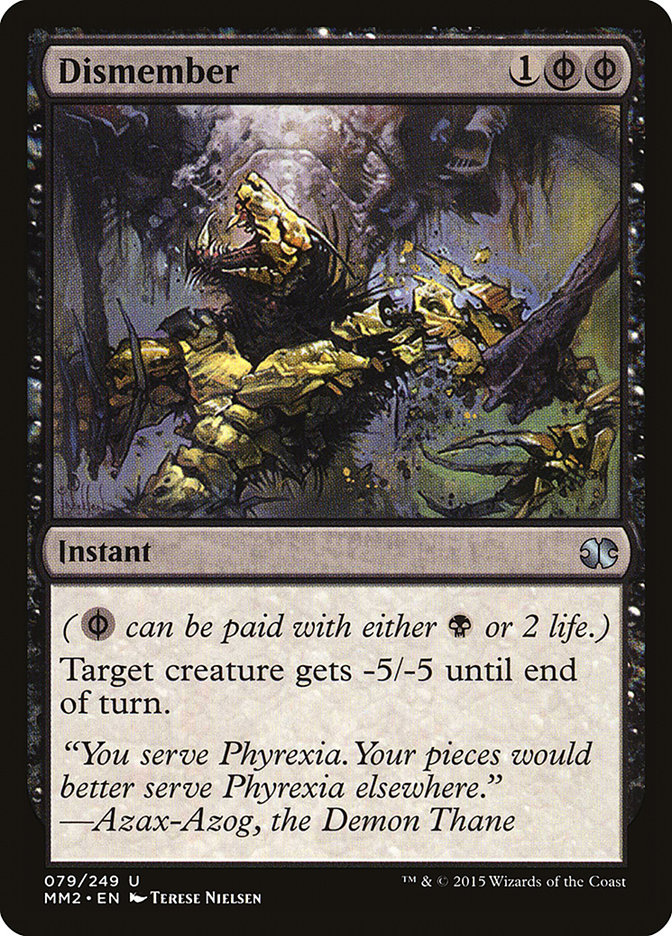There are few things I like more than brewing. The surprise factor brings an edge to tournament play. Opponents are unsure of how to combat a strategy they have never seen before. People won’t know how to sideboard against you and you will pick up extra wins as a result. We also earn style points for originality.
There is also something to be said for taking an existing deck and adding a little spice to it.
Recent metagame results from Modern events on three continents have taught us a lot. Notably, the SCG Modern Open in Syracuse showed us that Eldrazi Tron is a serious contender. It is no longer just Todd Stevens piloting the deck to a solid finish. After Eldrazi Tron racked up a one-two finish in Syracuse, I would expect to see Eldrazi Tron’s popularity rise. The other big deck to come out of nowhere was Storm. There was a very small percentage of the deck in the tournament, yet a majority of Storm players made Day 2, two Storm players made top 16, and two more made the Top 8. The deck just keeps doing well.
Creatures (7)
Lands (18)
Spells (35)
- 4 Sleight of Hand
- 4 Serum Visions
- 1 Peer Through Depths
- 4 Gifts Ungiven
- 4 Desperate Ritual
- 4 Remand
- 3 Grapeshot
- 4 Manamorphose
- 4 Pyretic Ritual
- 1 Apostle's Blessing
- 2 Past in Flames
Sideboard

Storm is a deck that be attacked from a few different angles if it is anticipated, such as using targeted destruction on Baral, Chief of Compliance or removing the graveyard with cards like Rest in Peace. Rest in Peace removes the Past in Flames element from Storm that is often crucial to victory. Both these plans present significant challenges for the Storm deck, but there are counters to the roadblocks. Apostle’s Blessing was run by Oliver Tomajko in his Top 16 Storm list. This is a solid answer to the targeted destruction route.
Baral, Chief of Compliance’s mana cost reduction ability can allow you to cast this card by only paying two life, requiring no mana. This makes for a very good line of play on turn two. Especially since your opponent will lose an important turn 2 progression by committing the turn to trying to deal with Baral, Chief of Compliance.
The Merger
This deck I’m presenting today is a combination of two winning strategies. First up is the Burn deck that recently was piloted by John Phillip Whetstone to a Top 16 finish at the Modern Open in Roanoke.
Creatures (13)
Lands (19)
Spells (28)

Burn is primarily a red-based deck that hinges on speed above all else. When it hits a speedbump, it tries to go the direct damage route to close out games. The deck has splashed green and white in the past. The green provides cards like Wild Nacatl, Atarka’s Command, and Destructive Revelry. The white provides cards like Boros Charm, Lightning Helix, and Path to Exile.
Right now, Burn is a Tier 1 deck in Modern. It has a very common last turn that most people are familiar with: it either draws a burn spell to finish off the opponent or it misses and hits a land for the loss. If you do not like that style of play, then I do not suggest Burn or this new creation I am putting forth.
Now on to the dark one: Death’s Shadow has been making a splash on the tournament scene for the last year. Recently, at the Open in Roanoke on Invitational Weekend, I played a Grixis version of Death’s Shadow to a second-place finish.
Creatures (16)
Lands (19)
Spells (25)

This deck utilizes a similar strategy of playing mostly cards that have a converted mana cost of one. Then it tries to hit for large chunks of damage as it disrupts the opponent’s gameplan. One of the important factors that makes this deck work is that you have to deal yourself lots of damage with cards like Thoughtseize and Street Wraith. This enables the Death’s Shadow to grow large and be a solid threat.
The truth is, this may be the hardest deck in Modern to play properly. Grixis Death’s Shadow has a large number of variables on almost every single turn of the game. There are feints, bluffs, and statistics to consider with almost every move to be making the optimal plays. This is definitely not a good choice for anyone who is not very proficient with Magic and Modern.
Without further ado, here’s the brew!
Creatures (20)
Lands (17)
Spells (23)
Sideboard

This deck can direct some of the damage to itself in order to enable the growth of Death’s Shadow.
Eidolon of the Great Revel also accomplishes this goal more efficiently when you play spells with it on the battlefield. With the addition of black we gain more spells that can deal three damage for one mana, such as Bump in the Night.
The sideboard options are more diverse when it comes to fighting graveyard-based strategies. The diversity comes from the addition of Rakdos Charm, which also doubles as an answer to artifacts. Against a deck like Living End or Elves, Rakdos Charm has a third ability that can finish off the opponent.
Fatal Push is a great answer to Tarmogoyf, which is typically a problem for the Burn deck. Fatal Push also gives us additional edges against the classic Grixis Death’s Shadow deck. This is because Fatal Push trades one for one with Death’s Shadow itself. Death’s Shadow is a difficult card to play around for Burn, because as you are dealing your opponent damage, you are also growing the size of their creature.
Collective Brutality gives this deck an edge in the mirror match. Utilizing the -2/-2 to eliminate any creature Burn typically plays is useful. You also get to discard additional cards that may be situationally ineffective for additional benefits.
Death’s Shadow Burn is a good deck to play against a combo-heavy or midrange metagame. This is because you tend to be a little faster than the combo decks. The midrange players take a little longer to setup and have a hard time surviving the direct damage spells that finish them off.
A Few Quick Tips for Sideboarding
I would want to avoid playing against a deck that has a lot of lifegain options and answers to creatures. Cards we can expect people to sideboard in against us include Kor Firewalker, Stubborn Denial, Collective Brutality, Worship, Chalice of the Void, Blessed Alliance, Timely Reinforcements, and Burrenton Forge-Tender. All of them can be problems, but the black splash gives us creative answers for them.
Kor Firewalker can be dealt with by using Collective Brutality and Worship doesn’t matter if they can’t maintain all the conditions for it. Chalice of the Void has a great many answers in this list. Rakdos Charm and Destructive Revelry are both equipped to deal with this artifact that typically beats the Burn decks.
If you decide to sideboard out the Street Wraiths, then the Death’s Shadows should probably go with them. Try to determine if you are playing a matchup that wants more or fewer creatures. Some games you will want to have very few creatures in the deck, such as when your opponent is playing a massive amount of cheap removal spells.
In other games, especially when you are on the play, that may not be the case. You can throw off your opponent by switching strategies between games. Whether you are on the play for that game is also a huge determining factor on whether or not to keep the creature count high.
There are a few matchups where Eidolon of the Great Revel will be a liability. Do not forget to sideboard your copies out in those matchups.
What Are Your Ideas?
I like opening up the discussion with suggestions on changes to brews, but let me say a few things I have already tried and discarded. Dark Confidant was unfortunately unviable with Street Wraith, and Street Wraith was necessary for Death’s Shadow to be enabled efficiently.
Terminate raised the mana curve of the deck and didn’t do anything Fatal Push wasn’t doing for us. Surgical Extraction is not as flexible as Rakdos Charm, even though it did lower the curve of the deck.
Dismember could be a liability for getting stuck at a low life with our own Eidolon of the Great Revel on the battlefield.
Now that I’ve told you what hasn’t worked, let’s see what might, and what changes you can come up with! Let’s test this thing together!


